This post may contain affiliate links. Please read our disclosure policy.
Homemade beef ragu sauce is a simple combination of just a few ingredients and is simmered for hours on the stove. The result is the most delicious, flavorful, mouthwatering meat sauce that tastes amazing on homemade pasta. See why this recipe is worth the wait!
This rich sauce would also taste amazing with Classic Homemade Lasagna, Manicotti, Ricotta Stuffed Shells, or Cheese Ravioli.
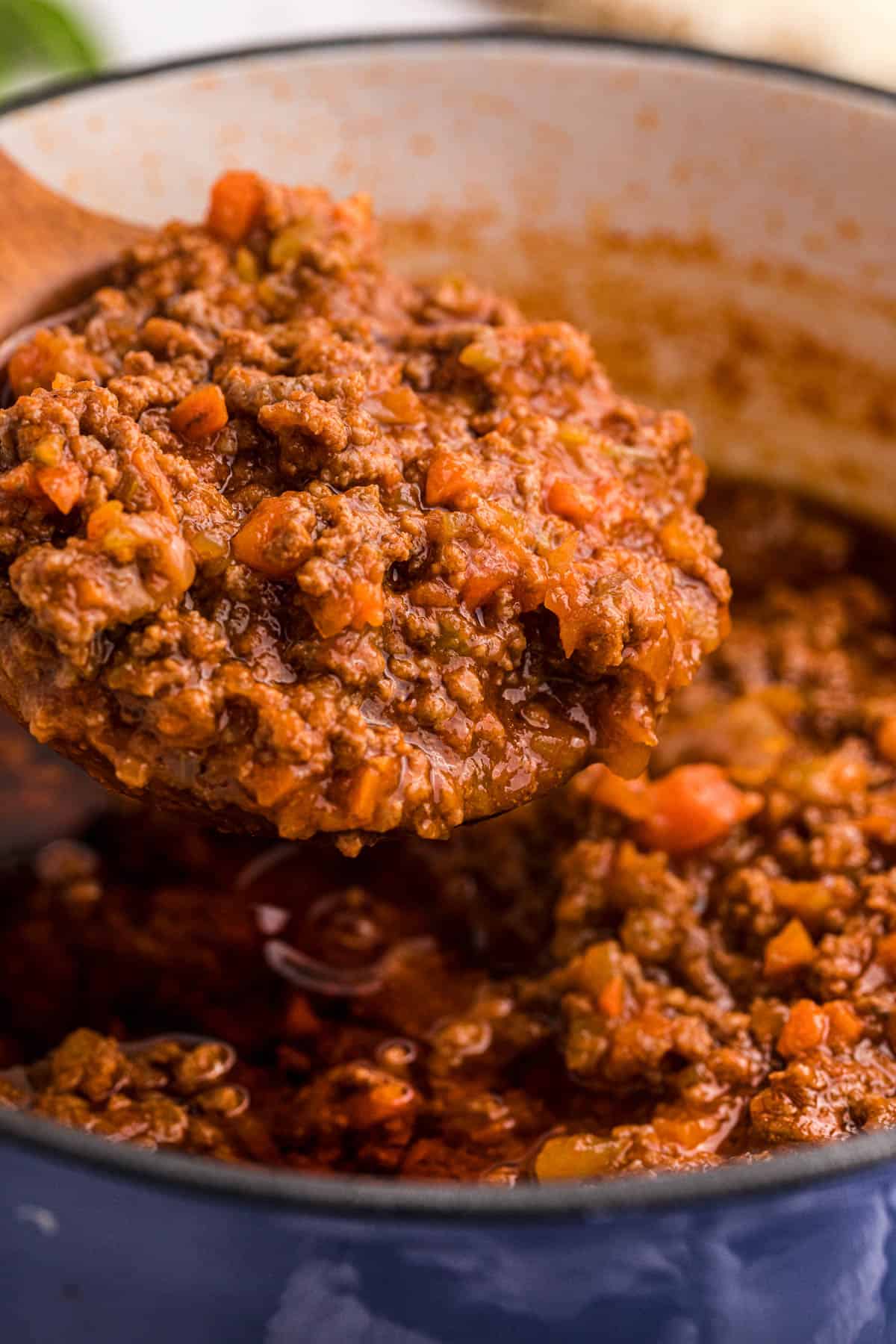
I was taught how to make this authentic beef ragu by a lovely Italian girl. Later, I made it for a foreign exchange student from Italy who said it tasted just like the ragu his mom makes. I have made it dozens of times now and will explain everything you need to know to get perfect results every time.
Why I love this recipe
- Slow cooked – This is one of those recipes that simmers on the stove for hours. Yes, it takes a long time to prepare, but very little effort. The reason it takes so long is that the vegetables need time for the moisture to evaporate so they can soften and completely breakdown. It takes time to develop the flavors, but it is worth it.
- Comfort food the whole family will love – This is the most requested dinner recipe in my house and lately I’ve only been making it for special occasions. When I really want to go above and beyond, I make some of my homemade fried calamari as an appetizer!
- Simple ingredients – Nothing fancy here, but you will be shocked at how good they taste together.
Ingredients needed to make beef ragu sauce
The exact quantities are listed in the full recipe card below, but here is a summary of what you will need.
Ground beef, onion, celery, carrot, tomato sauce, olive oil, and salt come together to make this great recipe.
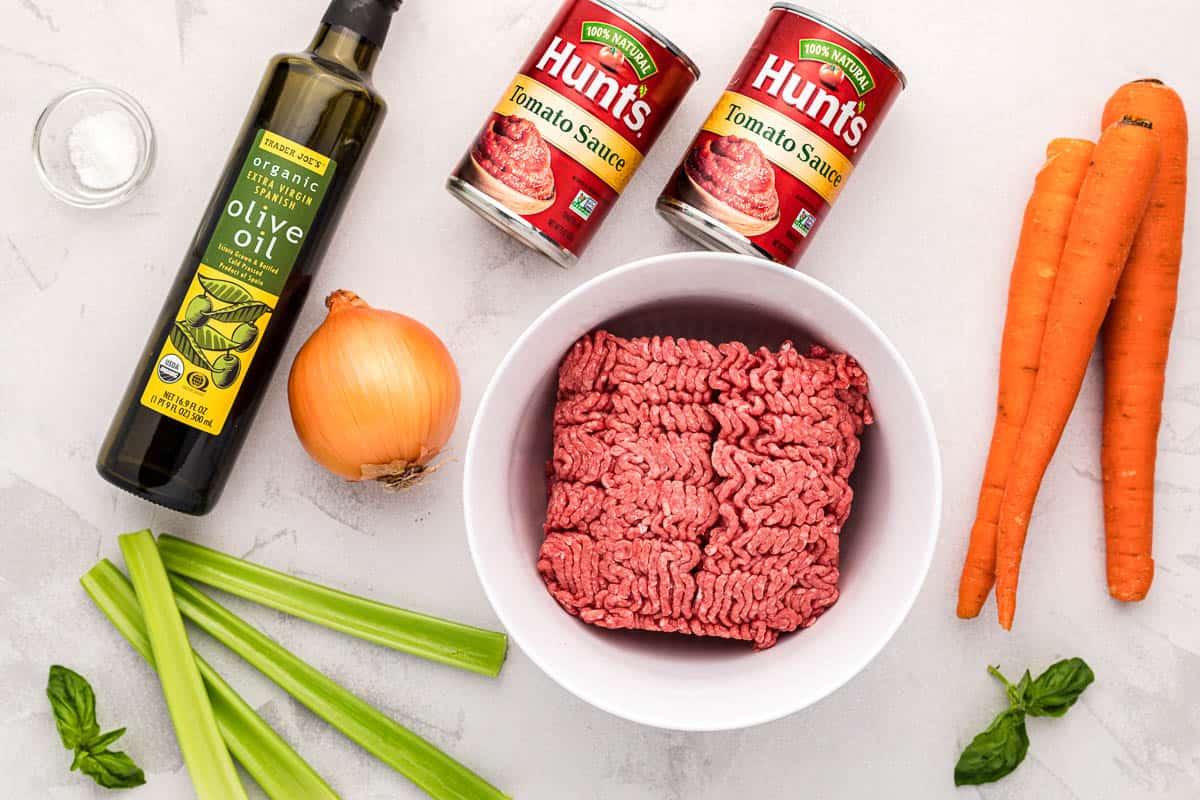
How to make ground beef ragu
Part 1: Combine all the ingredients
- Start cooking meat. In a large Dutch oven or stockpot, start cooking the ground beef over medium-high heat. Break up large chunks and only stir occasionally to prevent burning. You will want to start seeing browned bits stick to the bottom of the pot.
- Chop vegetables. While the meat is cooking, chop the onion, carrots, and celery. It is highly recommended that you pulse each one in the food processor to get a small diced cut.
- Simmer. Add diced vegetables, tomato sauce, and about 1/2 cup of olive oil to the meat mixture. Stir well to combine, deglaze pot by scraping the bottom of the pan with a wooden spoon, and bring the rich sauce to a simmer. Do not cover.
Part 2: Simmer, stir, taste, repeat
- Reduce heat. Once the ragu starts to simmer, gradually reduce the heat and occasionally stir. The goal is to maintain a very gentle simmer and as the liquid evaporates, the heat will need to continually be reduced.
- Add more olive oil. Every 30 minutes or so, add small amounts of olive oil. Once all of the recommended amounts of olive oil have been added, you can decide if you want to add more. I usually add about 1/4 cup more because I like the excess oil to coat my pasta.
- Add salt. After the ragu mixture has cooked for at least two hours, add salt. Stir and taste. Add more, if desired.
- Serve. The longer the sauce cooks, the better it will taste. You will know it’s done when the olive oil starts to pool on the top of the sauce and only low heat is required to maintain a very gentle simmer. A minimum of 3 hours is recommended, however, I’ve kept it on the stove for as long as 6-8 hours over very low heat.
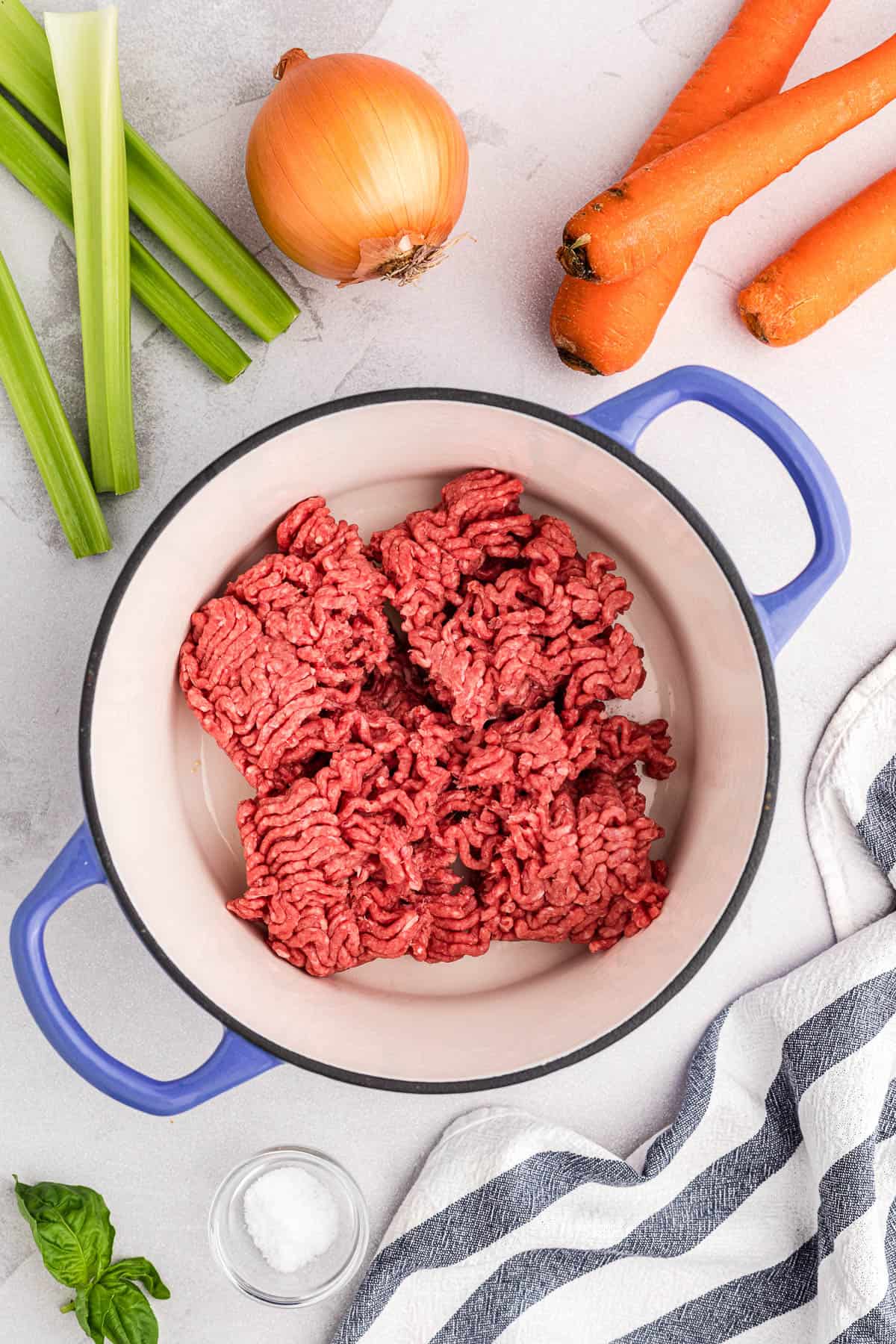
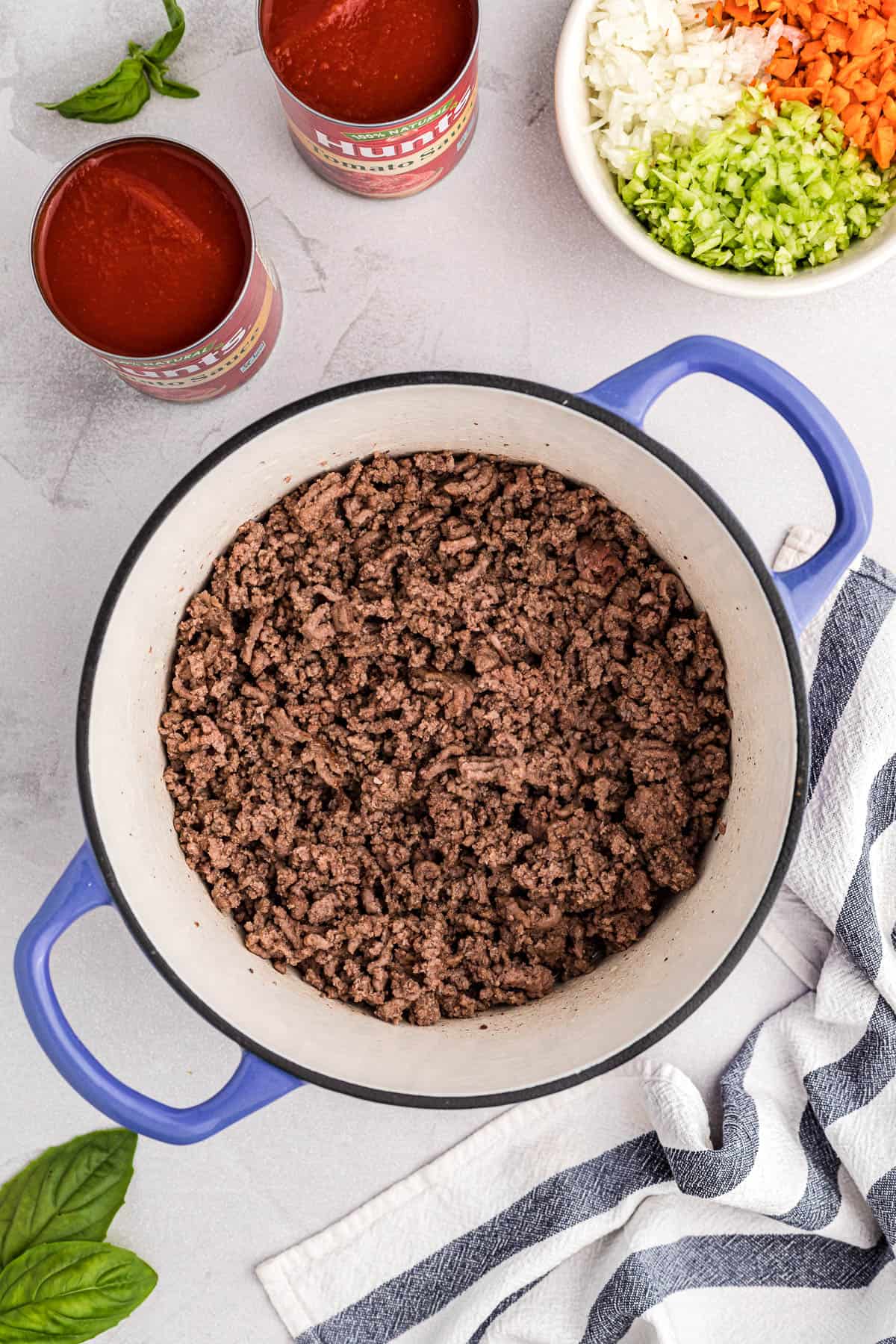
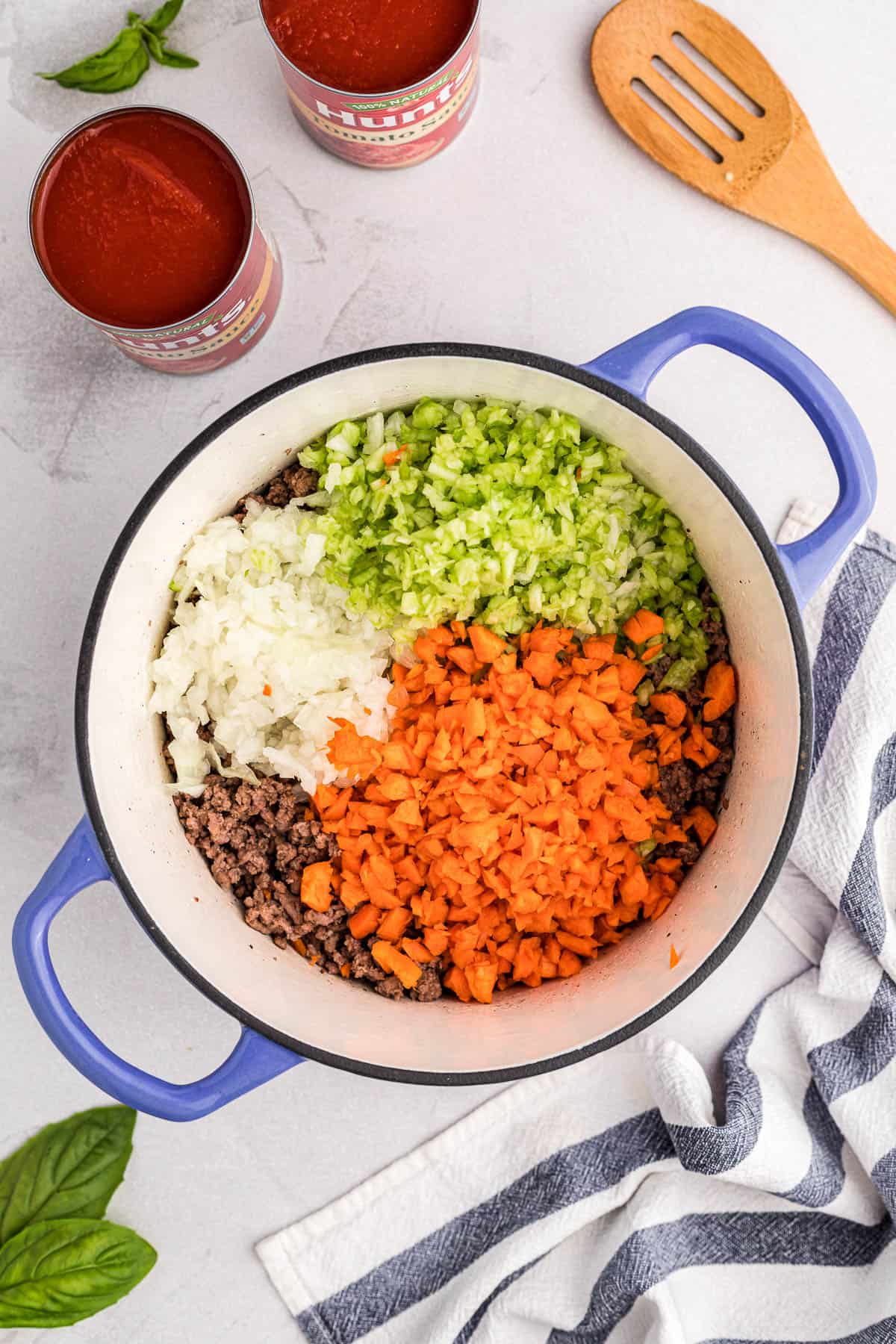
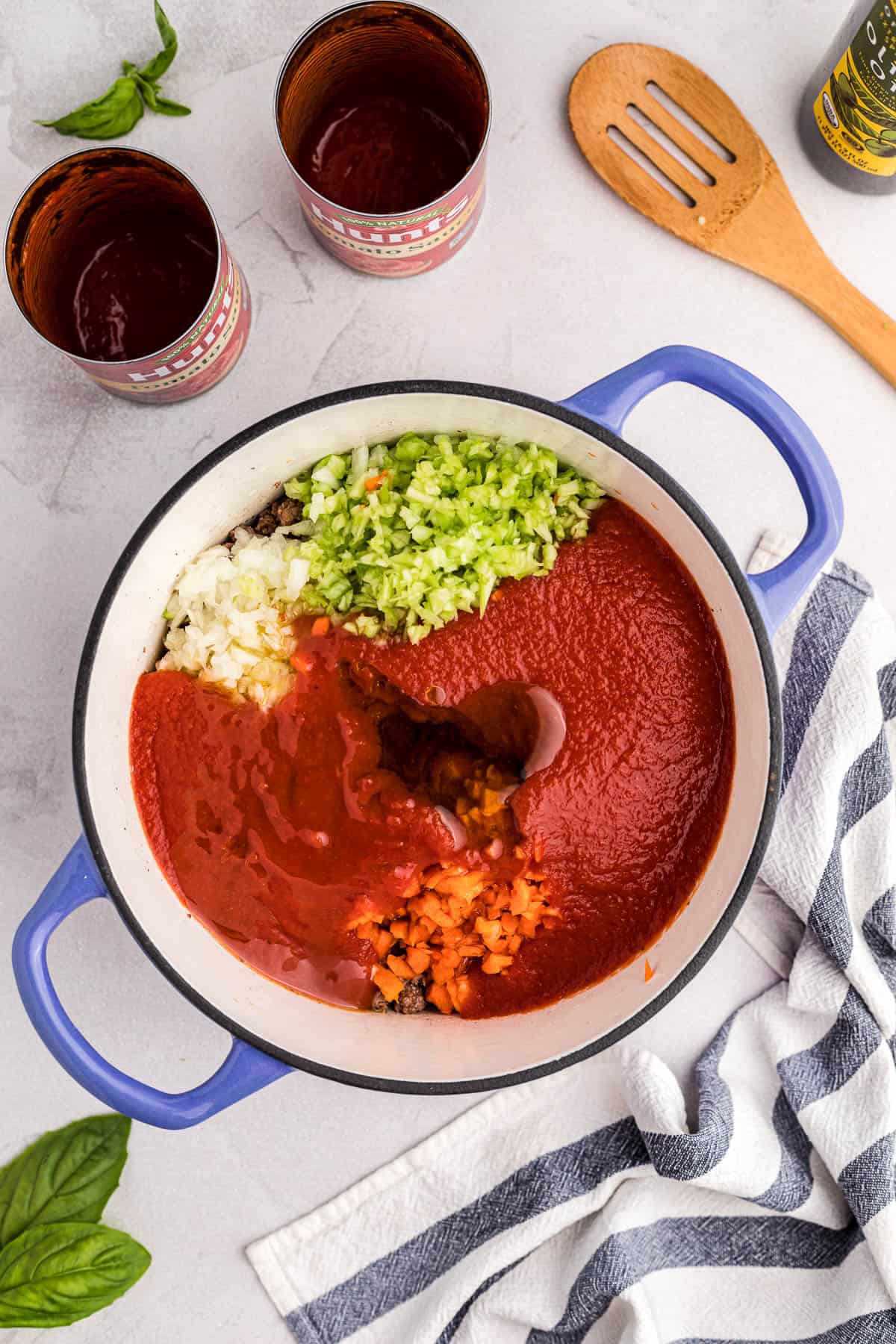
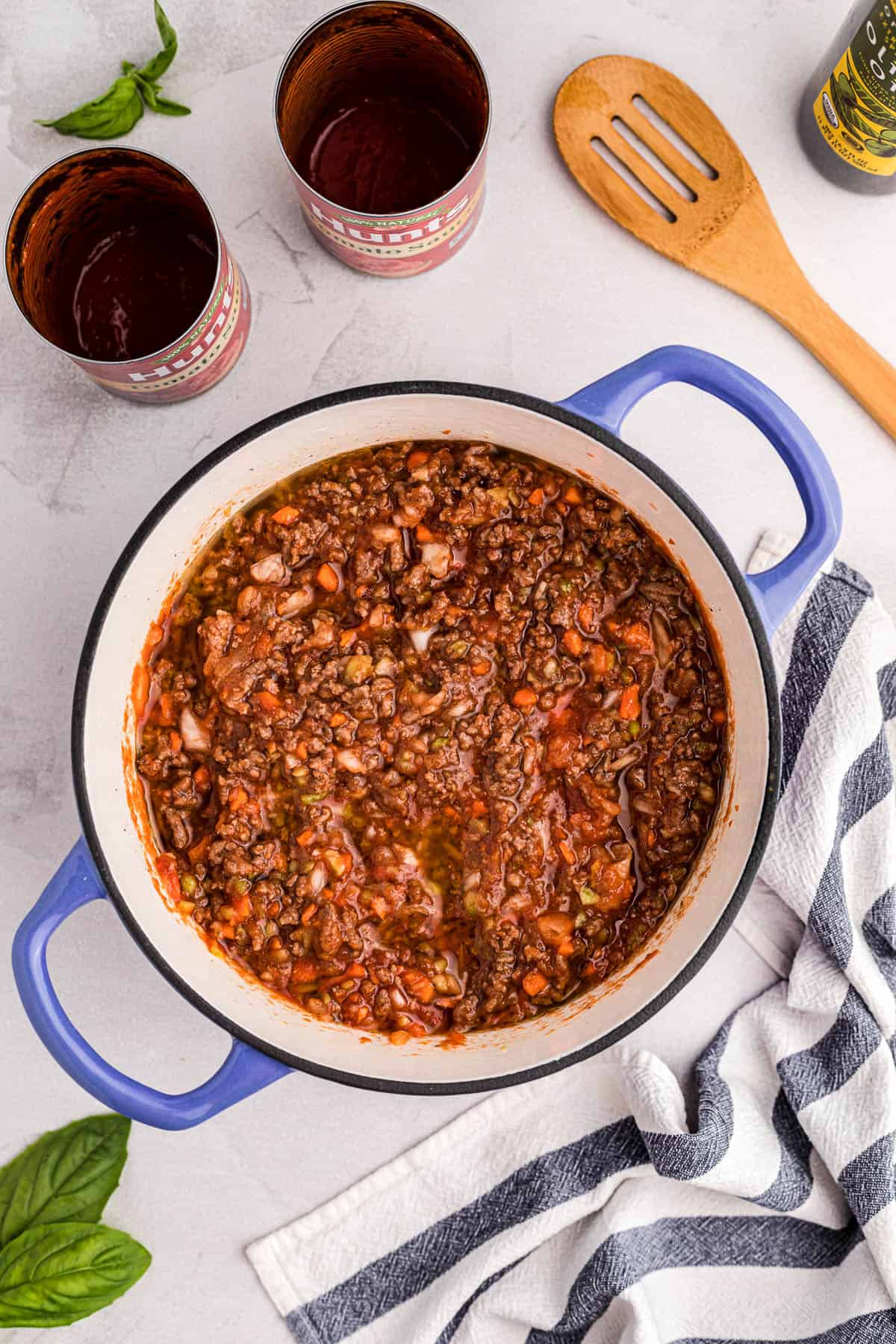
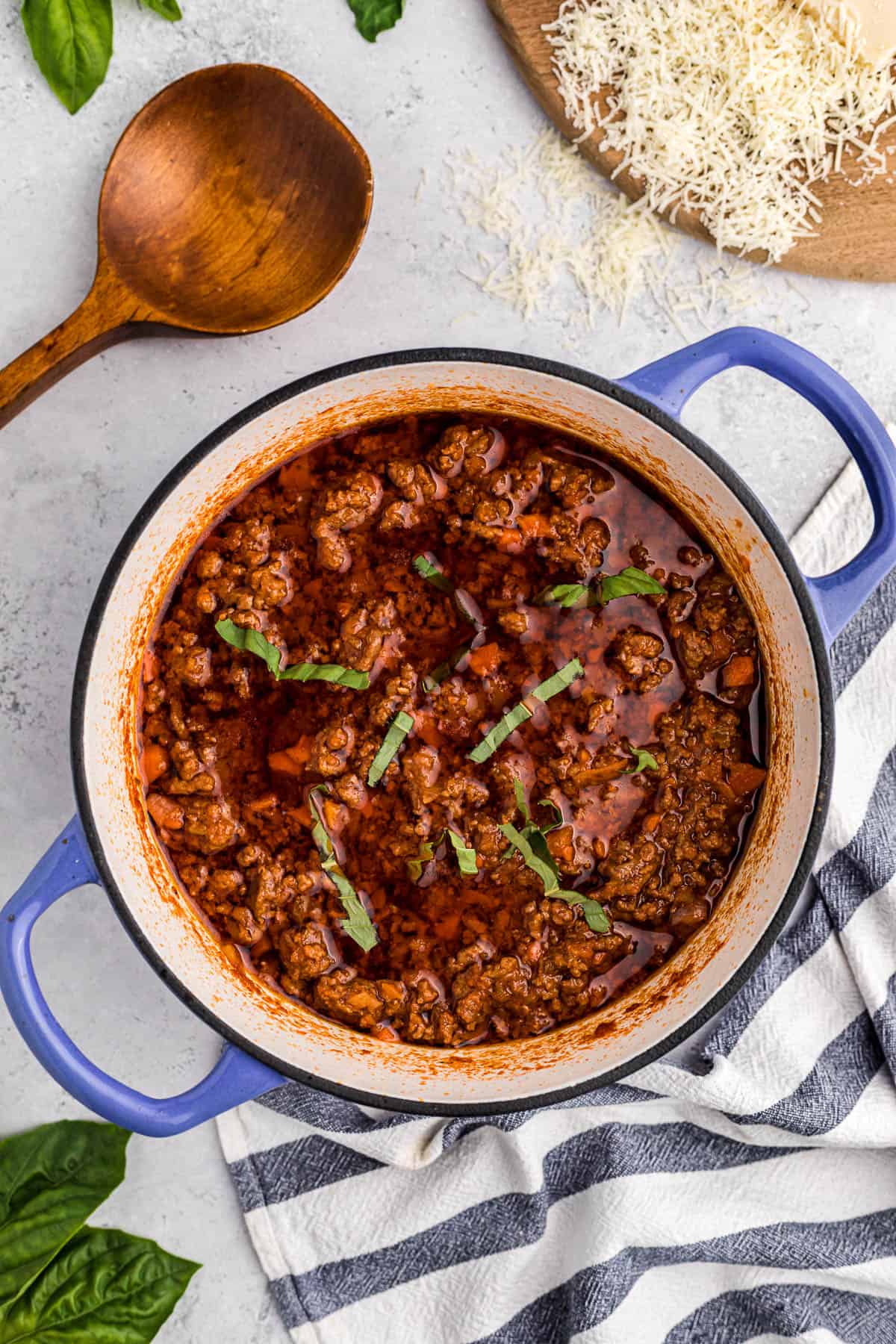
How to serve ragu sauce
Enjoy this sauce over your favorite pasta or creamy polenta with freshly grated parmesan cheese.
Because this Italian beef ragu is so rich, I will often mix it with a rich tomato sauce.
Storage and reheating
Leftover ragu sauce can be stored in an airtight container in the refrigerator. It is best if eaten within 3-5 days. Ragu sauce also freezes really well. To freeze, store in quart sized containers in the freezer and fully thaw in the refrigerator before reheating.
To reheat, add the ragu sauce to a pot on the stove and heat over medium-low heat until heated through. Alternatively, you can loosely cover in the microwave and heat in 1-minute increments at 50% power, stirring after each minute, until heated through.
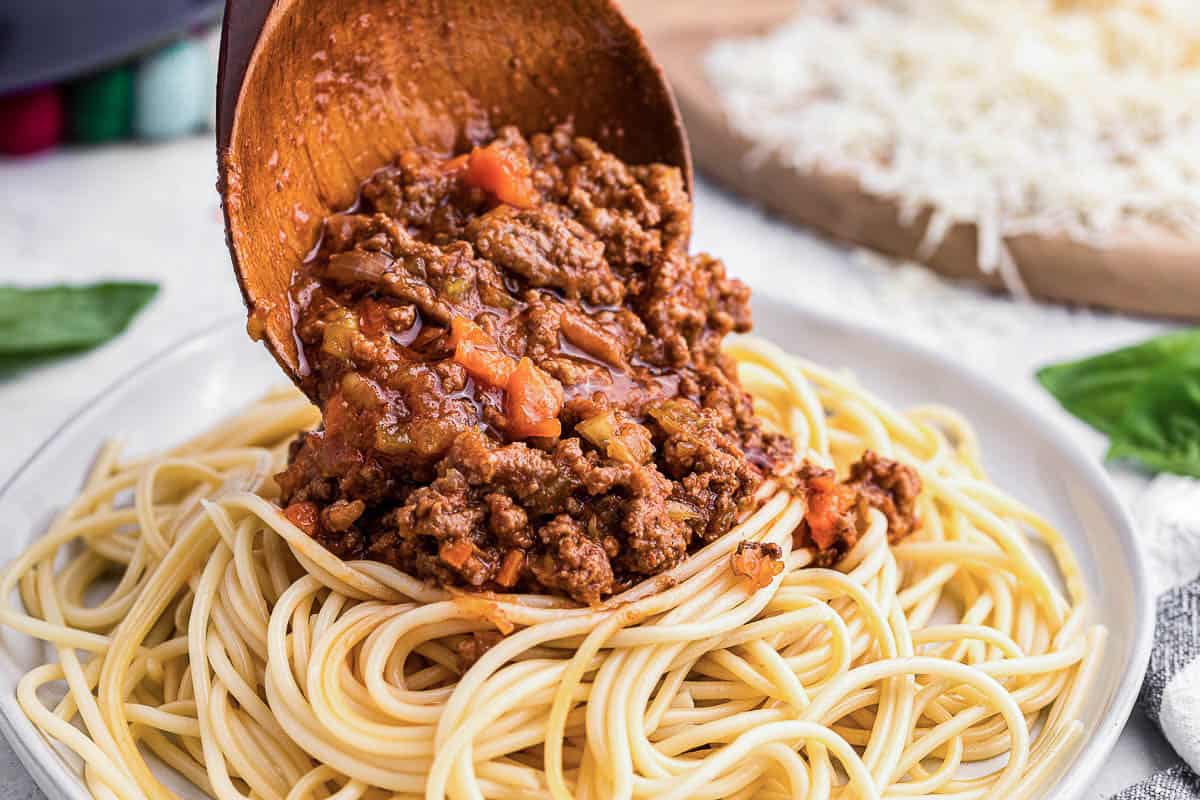
Recipe variations and substitution ideas
- Ground beef can be replaced with a beef chuck roast that has been chopped into very small pieces. After cooking for hours, the meat will shred and fall apart and the fat will melt away.
- A splash of red wine will really make the meat tender and add flavor. It should be added after the meat is browned to deglaze the pot. The acid from balsamic vinegar will have a similar effect. White wine can be used, but red wine is better.
- If you don’t have tomato sauce, you can use crushed tomatoes or San Marzano tomatoes either straight from the can or you can process them through the blender first. Some people like to add tomato paste but I don’t think it’s necessary.
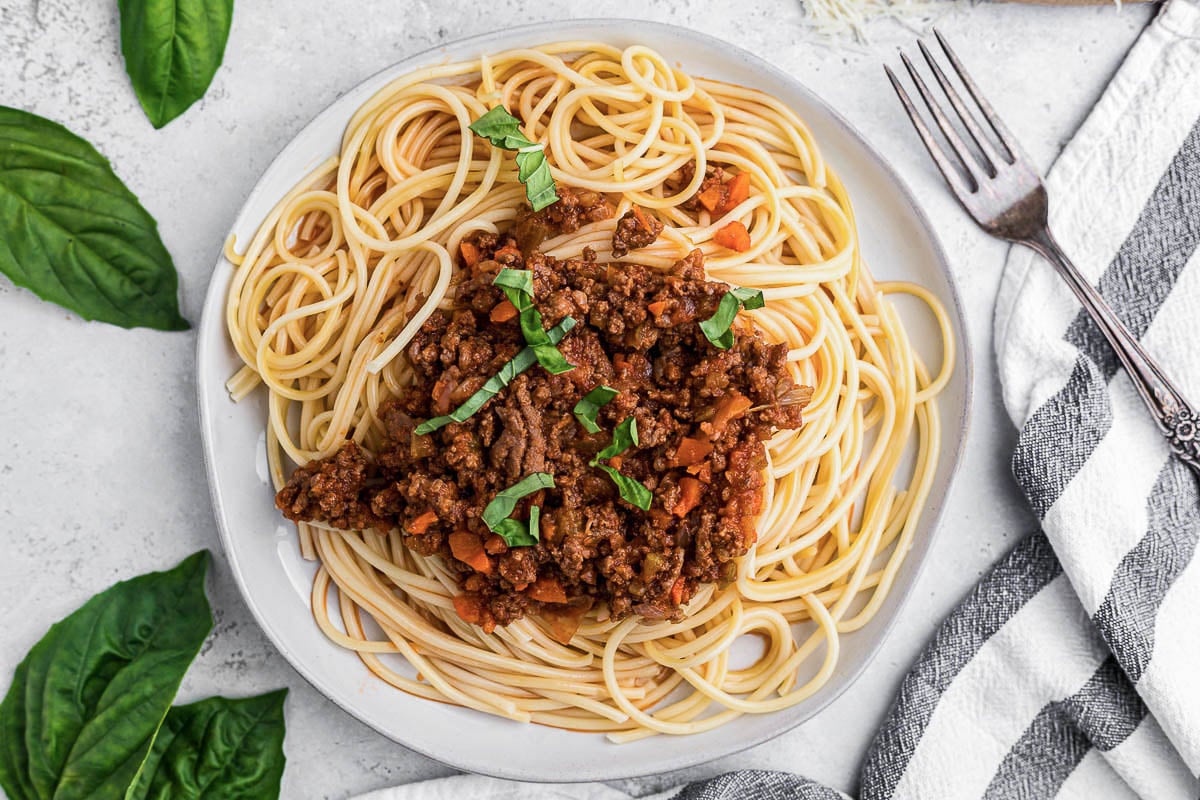
Homemade Ragu FAQs
A typical Italian ragu is a sauce is made with ground or chopped meat, tomatoes or tomato sauce, and mirepoix (onions, carrots, celery). There are many other ingredients that can be added.
Bolognese is also a meat-based sauce but its origins are in the region of the city of Bologna. So, to differentiate, Bolognese is a ragu but ragu isn’t necessarily a Bolognese sauce.
Ragu simply means a meat based sauce that is typically served with pasta.
Any kind of pasta will work. The type of pasta you choose is up to you, but it should be something that can really absorb the sauce and all its flavors. Of course, you can’t go wrong with homemade pasta, but any variety from standard spaghetti to penne will work. Pappardelle pasta (extra wide noodles) works fantastic as well.
Although the slow cooker is often preferred for slow cooking recipes, I don’t recommend using one to make ragu because the sauce needs to simmer without the lid to let the moisture evaporate. Similarly, a pressure cooker will hold in the moisture and you will get different results.
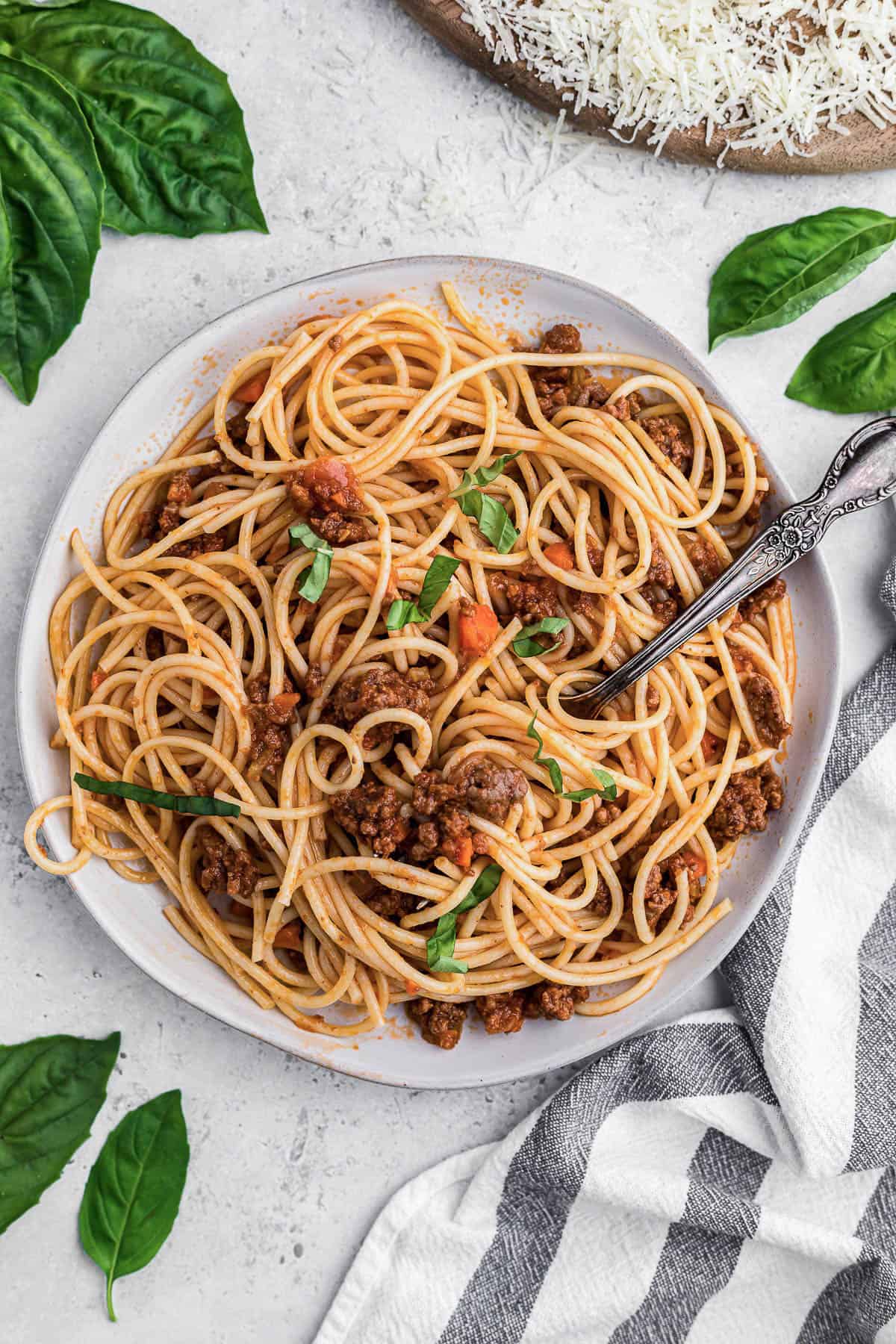
If you spend hours and hours making this sauce, you may as well make some homemade cannoli with mascarpone filling for dessert!
Pin this now to save it for later
Pin ItRagu Sauce
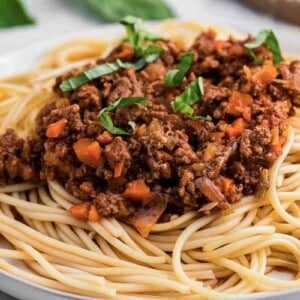
Ingredients
- 2 pounds ground beef 80/20 ground chuck recommended
- 1 1/2 cups yellow onion minced (one medium sized onion amounts to about 1.5 cups)
- 1 1/2 cups carrots minced (3-4 medium/large sized carrots amounts to about 1.5 cups)
- 1 1/2 cups celery minced (4-6 stalks celery amounts to about 1.5 cups)
- 30 ounces tomato sauce 2-15oz cans
- 1 cup extra virgin olive oil divided, use more if desired
- 1 teaspoon kosher salt use more if desired
Instructions
- Start cooking meat: In a large Dutch oven or stockpot, start cooking the 2 pounds ground beef over medium-high heat. Break up large chunks and only stir occasionally to prevent burning.
- Chop vegetables: While the meat is cooking, chop the 1 1/2 cups yellow onion, 1 1/2 cups carrots, and 1 1/2 cups celery. It is highly recommended that you pulse each one in the food processor to get a small diced cut.
- Simmer: Add diced vegetables, 30 ounces tomato sauce, and about 1/2 cup of 1 cup extra virgin olive oil to the meat mixture. Stir well to combine and bring to a simmer. Do not cover.
- Reduce heat: Once the ragu starts to simmer, gradually reduce heat and occasionally stir. The goal is to maintain a very gentle simmer and as the liquid evaporates, the heat will need to continually be reduced.
- Add more olive oil. Every 30 minutes or so, add small amounts of olive oil. Once all of the recommended amount of olive oil has been added, you can decide if you want to add more. I usually add about 1/4 cup more because I like the excess oil to coat my pasta.
- Add salt. After the ragu mixture has cooked for at least two hours, add 1 teaspoon kosher salt. Stir and taste. Add more, if desired.
- Serve. The longer the sauce cooks, the better it will taste. You will know it's done when the olive oil starts to pool on the top of the sauce and only low heat is required to maintain a very gentle simmer. A minimum of 3 hours is recommended. Enjoy over freshly cooked pasta.
Notes
- Recipe can easily be cut in half.
- Leftovers should be stored in an air tight container in the refrigerator and consumed within 3-5 days. Ragu sauce freezes well, so given the amount of time it takes to make this recipe, it is recommended you make the full recipe and freeze any leftovers.
- Ragu sauce is rather heavy, so you can combine with marinara if desired.
Nutrition
Nutrition information is automatically calculated, so should only be used as an approximation.

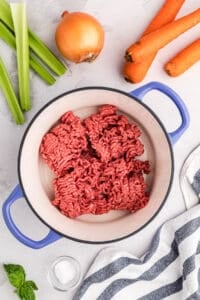
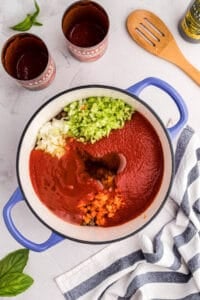
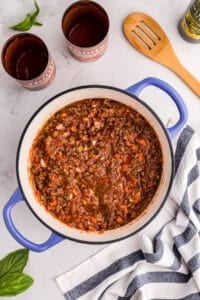
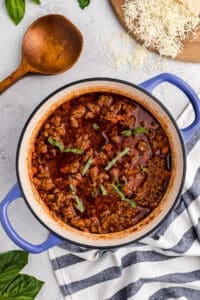

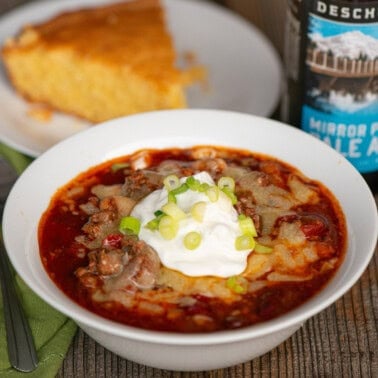


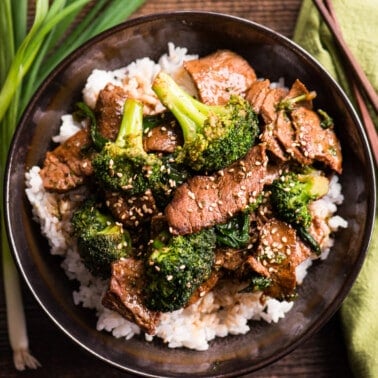









In the interest of time and cooking space for a party of 22 can the sauce be made the day before and reheated on the day of serving?
Absolutely! We love our leftover ragu!
This was a huge hit in my family. Just wondering if adding mushrooms is a good idea and if so at the beginning middle or end of cooking.
I’ve never added mushrooms because I was taught how to make this by an Italian and I was following her process exactly. That being said, I’m a lover of mushrooms and, if using, would add them at the beginning with everything else. You would need all the liquid to evaporate during the cooking process.
No Garlic?????
Nope. I know, weird. And I’m a total garlic lover too. You can absolutely add garlic, but I don’t in this sauce and it works.